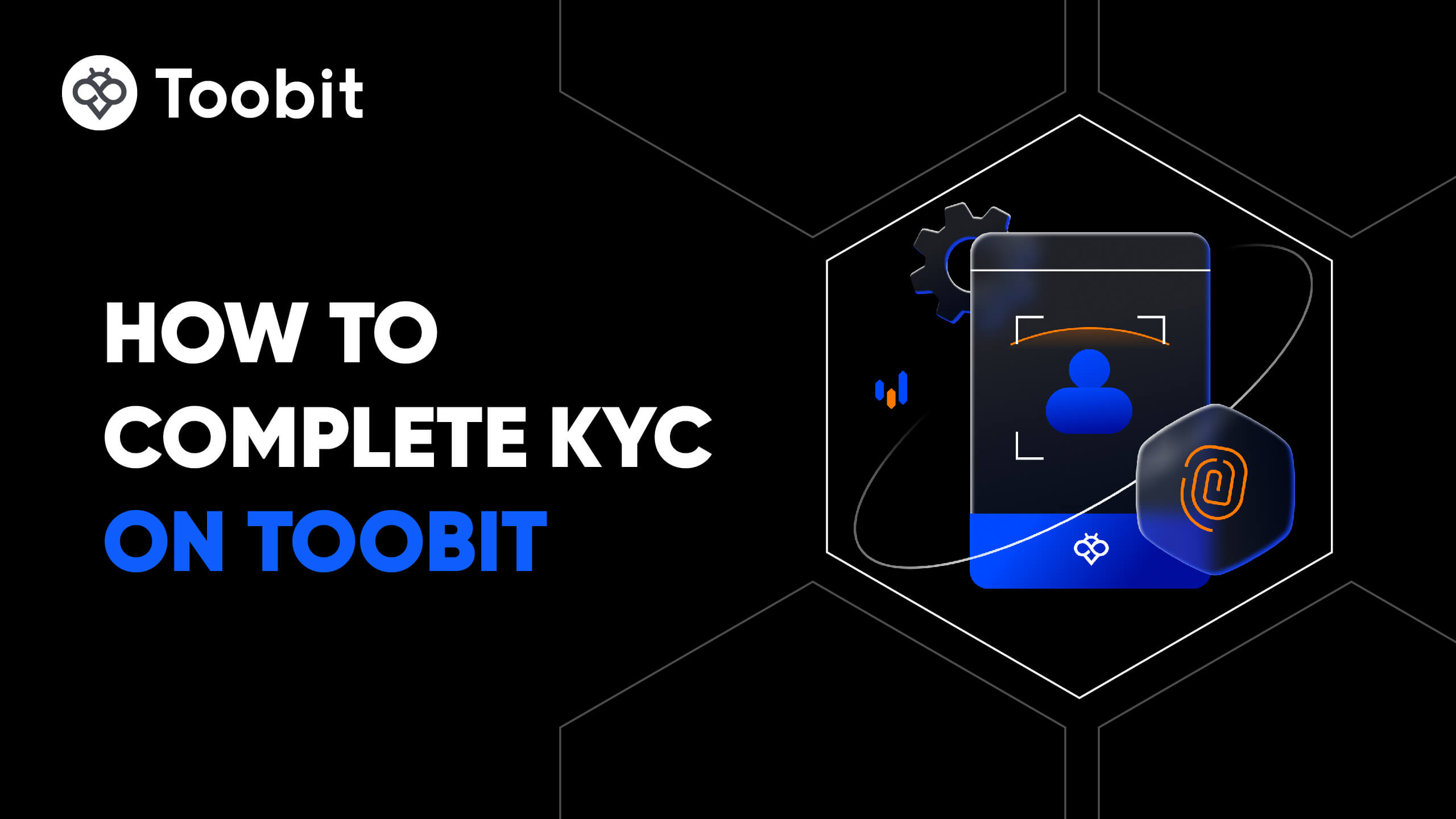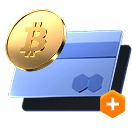Cardano price
ADACardano market info
Live Cardano price today in USD
How much is 1 ADA worth in ?
About Cardano(ADA)
Cardano price history
Why does the price of Cardano always fluctuate?
What factors affect the performance of Cardano prices?
Global Cardano prices
How to buy Cardano
Create your free Toobit account
Sign up on Toobit with your email address/mobile phone number and country of residence, and create a strong password to secure your account.
Verify your identity
Complete identity verification by submitting your personal details and a valid photo ID.
Add a payment method and buy Cardano (ADA)
Add a credit/debit card or bank account after verifying your Toobit account. Use multiple payment options to buy Cardano on Toobit.
Trade ADA perpetual futures
After signing up on Toobit and buying USDT or ADA tokens, you can start trading derivatives, including ADA futures and margin trading to increase your income.
Join ADA copy trading with lead traders
After signing up on Toobit and successfully buying USDT or ADA tokens, you can also start copy trading by following Lead Traders.
Where can I buy Cardano?
Buy crypto on the Toobit app
Sign up within minutes to purchase crypto via credit card or bank transfer.
Trade on Toobit
Deposit your cryptocurrencies to Toobit and enjoy high liquidity and low trading fees.
Video section — quick verification, quick trading

How to complete identification on Toobit and protect yourself from fraud
- 1.Log in to your Toobit account.
- 2.If you're new to Toobit, watch our tutorial on how to create an account.
- 3.Click on the profile icon in the upper right corner of the navigation bar, then tap on Identification page.
FAQ About Cardano (ADA)
What is the utility of the ADA cryptocurrency?
The ADA token powers the Cardano ecosystem and serves several core purposes:- Staking: Secures the network under the Ouroboros proof-of-stake protocol. Stakers earn ADA rewards. - Transaction fees: Used to pay for on-chain transactions, including transfers, smart contract executions, and token creation. - Governance: In the upcoming Voltaire era, ADA will enable on-chain voting for project funding and network upgrades.As Cardano price prediction models often highlight, the network’s staking and governance utilities are key drivers of its long-term sustainability.What does Cardano (ADA) stand for?
ADA is named after Ada Lovelace, a 19th-century mathematician recognized as the world’s first computer programmer for her work on Charles Babbage’s Analytical Engine, making her a fitting inspiration for a blockchain project rooted in mathematics and engineering precision.How does Cardano (ADA) work?
Cardano uses the Ouroboros consensus protocol, a proof-of-stake system that ensures secure and energy-efficient transaction validation. Validators lock up ADA to participate in block production and earn rewards for maintaining network integrity.ADA holders can store tokens in software or hardware wallets, stake their coins, and vote on governance proposals as part of the Cardano Voltaire era. With a maximum supply of 45 billion ADA, Cardano includes a built-in Treasury that funds future development.Investors monitoring Cardano news or evaluating Cardano price prediction data often cite these features — particularly its staking rewards and capped supply — as key long-term value factors.What is the history of Cardano?
Founded by Charles Hoskinson in September 2017, Cardano is often referred to as a “blockchain 3.0” project, advancing beyond Bitcoin and Ethereum. Each major network upgrade — Shelley (decentralization) and Alonzo (smart contracts) — has been named after historical innovators.Development is guided by academic research and peer-reviewed protocols. The Ouroboros consensus mechanism, developed with researchers from the University of Edinburgh and Tokyo University, remains one of the world’s most rigorously verified blockchain algorithms.Major Cardano news milestones and research progress frequently influence Cardano price prediction sentiment and investor confidence.How many Cardano (ADA) coins are in circulation?
Cardano has a maximum supply of 45 billion ADA, with about 31 billion currently circulating. Early public sales between 2015 and 2017 offered ADA at around $0.0024, resulting in exceptional returns for long-term holders.Founding entities received allocations to support development and promotion: IOHK (2.5B ADA), Emurgo, and the Cardano Foundation (648M ADA). The remaining 84% went to early investors.Supply transparency is a crucial consideration in Cardano price prediction models and investor analysis.What differentiates Cardano from other cryptocurrencies?
Cardano stands out for its research-driven development and two-layer architecture separating settlement and computation. This design improves scalability, flexibility, and energy efficiency.Its Ouroboros proof-of-stake consensus offers a sustainable alternative to energy-intensive mining, while formal verification and peer-reviewed code enhance network security. This scientific rigor and modular design make Cardano one of the most robust and adaptable blockchain ecosystems — a recurring focus in Cardano news and analyst discussions on Cardano price prediction.What is the role of the Cardano Foundation in the ecosystem?
The Cardano Foundation oversees the blockchain’s operational resilience, education, and global adoption. It ensures security, supports developers, and fosters ecosystem growth through partnerships and outreach.Key initiatives include:- Operational resilience: Maintaining network performance and implementing technical upgrades. - Education and regulation: Promoting blockchain literacy and advocating for innovation-friendly policies.- Adoption: Driving enterprise use cases and supporting blockchain-native startups. The Foundation’s advocacy work and ecosystem partnerships often make headlines in Cardano news updates and can impact community sentiment around Cardano price prediction trends.Why has the ADA coin price been increasing recently?
ADA's recent price surge followed its inclusion in the U.S. strategic crypto reserve, announced by President Donald Trump. This recognition placed ADA alongside Bitcoin, Ethereum, Solana, and XRP as one of five digital assets recognized by the U.S. government. The news reinforced the legitimacy of ADA in the crypto space, boosting institutional confidence and pushing prices from $0.68 to nearly $1.Ongoing Cardano news, such as the upcoming White House Crypto Summit (March 2025), has also fueled optimism. Broader market recovery and growing institutional participation continue to strengthen ADA’s position and influence Cardano price prediction forecasts across major exchanges.What factors could potentially influence the future ADA coin price?
Future Cardano price prediction outcomes depend on:- Technological innovation: Upgrades like Hydra that enhance scalability and dApp performance. - Adoption: Enterprise and government partnerships driving on-chain activity. - Regulation: Favorable global frameworks can attract institutional investors, while negative rulings may limit growth. - Macroeconomic trends: Interest rates, inflation, and global stability can shift investor demand toward or away from ADA.Keeping up with Cardano news and development updates is key to understanding these dynamics.What are some potential price predictions for ADA coin in the near future?
Price targets for ADA vary widely and are speculative. Conservative Cardano price prediction ranges place ADA around $0.616–$0.750 by end-2025, assuming steady (but modest) adoption and lingering regulatory uncertainty. More optimistic Cardano price prediction scenarios envision multi-year upside—sometimes citing $10–$20—but those depend on major ecosystem expansion, institutional participation, and favorable regulation. As always, treat any Cardano price prediction with caution: outcomes hinge on technology traction, macro conditions, and market sentiment, and volatility can be significant.What is Transaction Metadata, and how is it used?
Transaction Metadata allows additional data to be securely attached to a Cardano transaction without affecting value transfer.Common use cases:- NFTs: Embedding token names, image hashes, or attributes during minting.- Digital identity: Storing verified credentials or identity proofs.- Supply chain & education: Tracking provenance or academic certifications.This flexibility supports real-world applications and reinforces Cardano’s goal of becoming a multi-utility blockchain, often highlighted in Cardano price prediction discussions.Is Cardano a good investment?
This is not financial advice. Cardano’s scientific foundation, sustainability focus, and active development make it a long-term project with strong fundamentals. Its growth depends on adoption, developer engagement, and regulatory clarity.However, cryptocurrency markets are volatile. Always do your own research (DYOR) and stay updated with credible Cardano news before making investment decisions or relying on Cardano price prediction models.What are the key advantages of building dApps on Cardano?
For developers, Cardano offers several compelling advantages:Security & Reliability: The use of formally verified, peer-reviewed code and the Extended UTXO model reduces vulnerabilities.Low & Predictable Costs: The separation of computation and validation leads to more predictable gas fees.Sustainability: The Ouroboros PoS protocol is highly energy-efficient.Interoperability: A core design goal is to enable seamless cross-chain communication in the future.How do Smart Contracts work on Cardano?
Cardano smart contracts run on Plutus within the extended UTXO (eUTXO) model, which brings predictable execution, parallelizability, and strong security properties. Developers write on-chain logic that governs how funds can be spent, enabling dApps across DeFi, NFTs, and enterprise use cases.Separately, Cardano native tokens are assets created directly at the ledger level—they don’t require smart contracts to exist or transfer. Unlike ERC-20s on Ethereum, native tokens are treated like ADA by the ledger itself, making them more efficient, less error-prone, and simpler to mint and transact, while smart contracts are only needed for custom logic (e.g., minting policies or programmatic controls).


